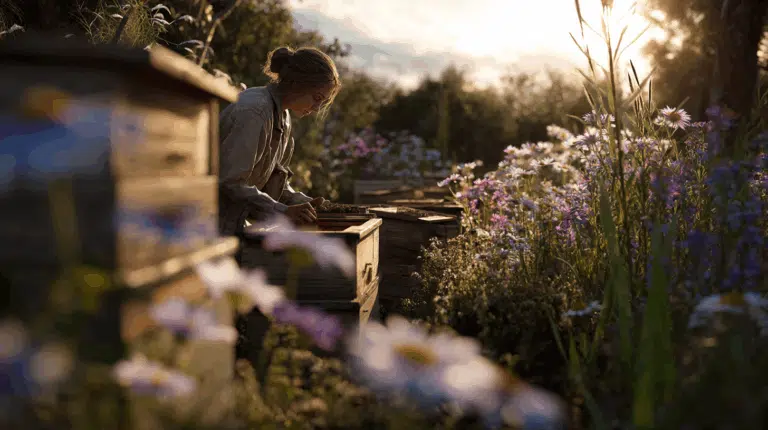Bee-attracting plants create a vibrant garden. Easy to sow, they attract bees, butterflies, and other beneficial insects, and offer long-lasting color and biodiversity. Ideal for borders, flowerbeds, and flower meadows, they contribute to a healthy, natural environment.
With bee-friendly plants from EasySeeds.eu, you can turn your garden, balcony, or yard into a true paradise for bees, butterflies, and other beneficial insects. These plants have been specially selected for their high nectar and pollen production, making them a sustainable contribution to biodiversity and a healthy living environment.
Whether you choose seeds, perennials, or flower-rich mixes, our bee-friendly plants will bring color, life, and vibrancy to your garden all season long.
Natural balance in the garden.
Bee-friendly plants attract not only bees, but also bumblebees, hoverflies, and butterflies. This creates a vibrant ecosystem where plants pollinate better and fruits grow more abundantly.
Sustainable and environmentally friendly.
By sowing or planting flowers for bees
Color and scent all season
long. Many bee-loving plants bloom for extended periods – from early spring until late autumn. Think of varieties like lavender , salvia , rudbeckia , echinacea , cosmos , poppy, and phacelia . Together, they create a lush sea of flowers that not only attracts insects but also enhances your garden.
Combine different flowering periods – Choose plants that bloom in succession, so that nectar is available from March to October.
Sow or plant in a sunny spot – Bees love warmth and light. Therefore, place the bee-friendly plants in a sheltered, sunny location.
Don't use pesticides – Chemical pesticides harm pollinators. Choose organic or natural gardening methods.
Provide variety – Combine flower seed mixes with perennials to ensure year-round flowering.
Let some flowers bloom – this allows insects to overwinter and seeds to spread naturally.
EasySeeds.eu offers a carefully selected range of bee-friendly plants and flower mixes for bees and butterflies . From fragrant herbs to wildflowers and perennial nectar plants – all selected for quality, germination rate, and ecological value.
🐝 Order easily online now – buy bee plants at EasySeeds.eu!
Bring more life, color, and sustainability to your garden and give nature a helping hand.

Bee-friendly plants are flowers and plants specifically attractive to bees, bumblebees, and other pollinators. They provide nectar and pollen, contributing to a healthy bee population and a thriving, biodiverse garden.
Bees and other pollinators are essential for the production of fruits, vegetables, and seeds. By sowing bee-friendly plants, you support natural pollination, stimulate biodiversity, and ensure a healthier garden teeming with life.
Yes! Besides bees, they often attract butterflies, bumblebees, and ladybugs. This increases biodiversity and can help naturally control pests in the garden.
That depends on the type of plant:
Annual bee plants usually bloom from June until the first frost.
Perennial bee-loving plants bloom every year, often from May to August. Removing faded flowers extends the flowering period.
More pollinators for fruits and vegetables
Rich, colorful flowers
Stimulating biodiversity
Supporting endangered bee species
Easy to sow and maintain
. In short, bee-friendly plants make your garden more beautiful and ecologically responsible.